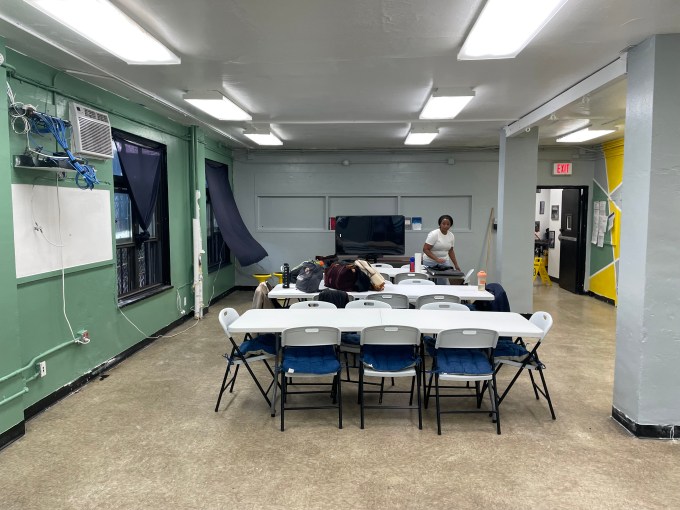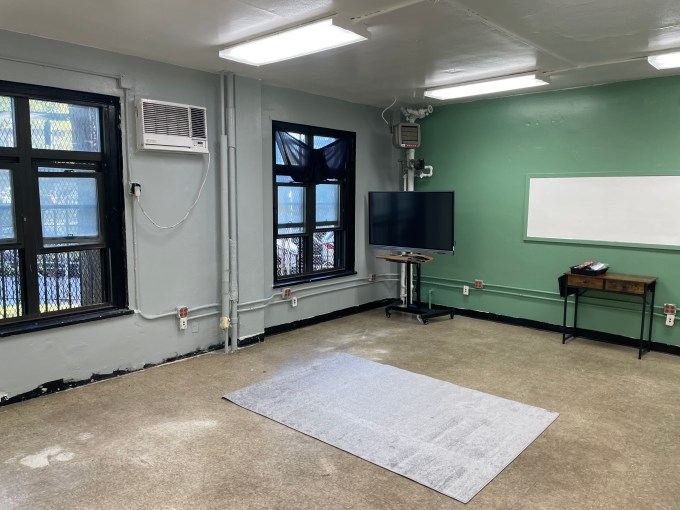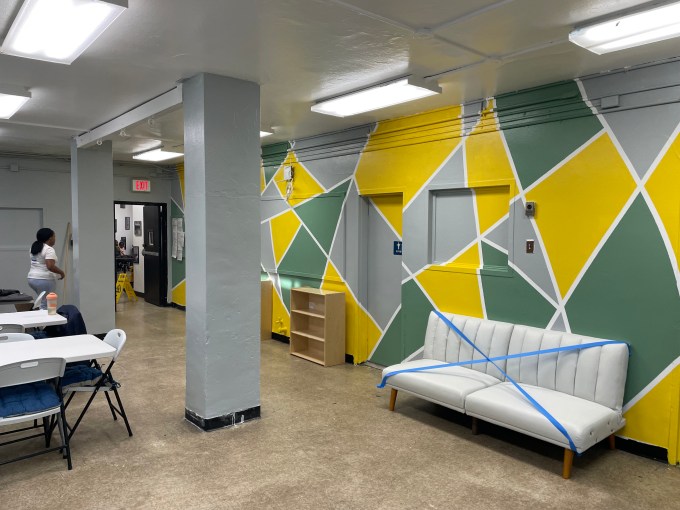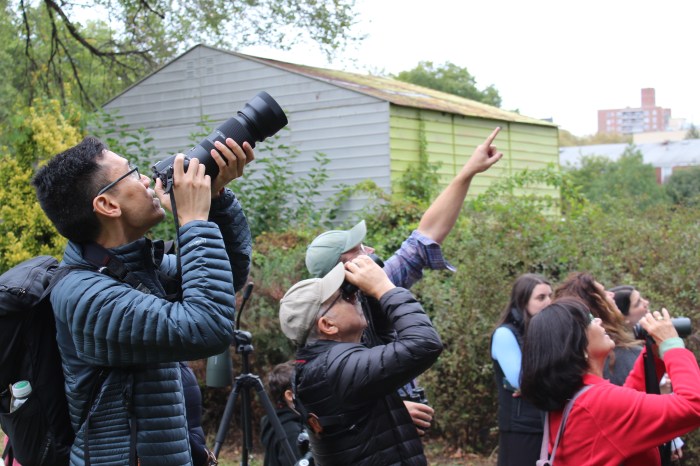
The newly renovated community room at Astoria Houses. Photo: Public Housing Community Fund.
Oct. 24, 2024 By Shane O’Brien
A newly renovated community room is set to be unveiled at the Astoria Houses NYCHA complex following months of consultation with young members of the local community.
The Public Housing Community Fund (PHCF), which aims to enhance the lives of residents living in NYCHA complexes, will cut the ribbon at the new community room by the end of the month.
The renovated space was developed by 22 middle schoolers from Astoria Houses through PCHF’s NYCHA STEAM Innovators program.
The new pilot program is developed in partnership with the Salvadori Center, a non-profit working with schools in Pennsylvania and New York to provide push-in STEAM programs for K-12 students.
The students worked with Salvadori’s STEAM educators and professional designers during 20 sessions over a five-week period between July and August to learn and create a design proposal for a room at their community center.
The project was designed to give young people a voice in community design efforts at their housing developments.
Volunteers from Turner Construction brought the chosen design to life, while the team of local students helped apply the final touches by completing the painting and assembling furniture in the room. Each student who participated in the project received a stipend of $250.
- The Astoria Houses’ renovation is the first project under PCHF’S pilot NYCHA STEAM Innovators program.
- Alex Zablocki, executive director of PCHF, said participating students learned about architecture and design during the five-week program and also had a say in the development of their own community space.
“They (students) get exposed to the STEAM-based curriculum, but then also see their vision come to life in their community,” Zablocki said. “What’s great about this room is that is is used primarily by middle schoolers. So the middle schoolers helped redesign it… and now they’ll be the users of this room in a space that hopefully they’ll feel more comfortable in and really proud of.”
Zablocki said the program helps expose youth in public housing projects to careers they may not have been exposed to, providing hands-on learning experiences.
“This program is much different than what you may experience in your middle school through a classroom project,” Zablocki said. “They actually see this come to life.”
Zablocki said the project has converted a dated and single-purpose community room into a bright multi-purpose room featuring movable tables, stackable chairs, an LED television and a smart board. The space also features a rug for people to sit in during events.

Photo: PHCF
Students involved in the project opted for a design that allowed for games, learning and arts and crafts, Zablocki said.
They have also opted to include “abstract elements” on one of the walls of newly redesigned room, including colorful geometric shapes that mirror off the other walls in the room to add life and vibrancy.

Photo: PHCF
“It brings more vibrancy and life to room that would have often been drab,” Zablocki said.
The newly redeveloped community room at Astoria Houses will be launched just before the onset of the darker and colder winter months, and Zablocki said the room will serve as a safe haven for local residents.
He added that the Astoria Houses community space redesign is the first of many such projects that the PCHF hopes to undertake in the coming months and years.
“Community centers in all NYCHA communities should be as good as this room, and we’re hopeful that the residents of NYCHA, especially youth, can lead the way in telling us how they want to see their spaces designed and how they want to use them.”
The Fund is currently supporting similar projects at the Linden and Penn-Wortman Houses in Brooklyn, while additional unnamed projects are also in the works.
Zablocki described the pilot program in Astoria Houses as a true community effort, with collaboration from public and private partners as well as the residents of the NYCHA complex.
The project was funded by the Building & Construction Trades Council and L&M Development, while it was supported by PHCF, the Salvadori Center and HANAC, which provides cornerstone programming at Astoria Houses.
Meanwhile, Janovic Painting & Construction supplied all painting supplies for the project, while volunteers from Turner Construction implemented the final design produced by the students.






